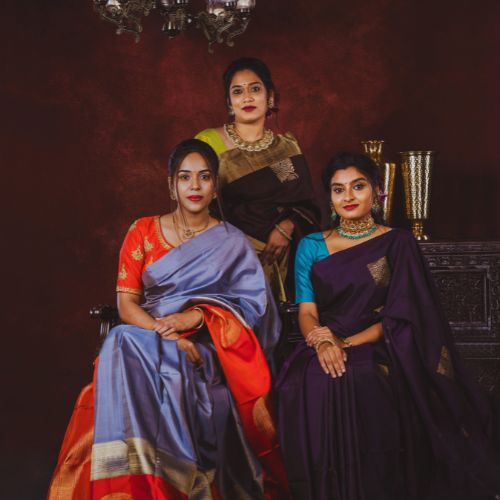Exploring The History of Ikkat Sarees
Ikkat sarees, with their striking patterns and vibrant colors, are a testament to India's rich weaving heritage. Known for their intricate designs and artistic appeal, these Ikkat sarees have captured the hearts of fashion lovers worldwide. Each thread of these Ikkat sarees tells a story of craftsmanship passed down through generations, making them a unique combination of art and culture.
What is Ikkat? Unveiling the Ikkat Origin
To put it simply, Ikkat is an age-old dyeing technique where threads are tied and dyed before weaving, creating unique patterns. Derived from the Malay-Indonesian word "mengikat," the term "ikat" means "to tie or bind." The technique involves resist dyeing threads before weaving them into the fabric, creating beautiful patterns.
Ikkat weaving originated in India’s Andhra Pradesh and Odisha regions, where it became an essential part of their textile heritage. Today, this technique is widely practiced across the country, from Gujarat to the South of India. The process begins by tightly tying parts of the yarn before dyeing it. Once dyed, the yarn is woven into the fabric, creating detailed patterns.

The Story of Ikkat
Ikkat has a long history in India, with early mentions in ancient texts. Ikkat was first used to make garments for royalty and religious ceremonies. Over time, different dynasties influenced its designs. It became a symbol of status and craftsmanship, with each region known for its unique motifs. As time passed, Ikkat became more accessible and spread across India, where local artisans added their own regional styles.
Ikkat silk sarees from Odisha are among the most exquisite Indian textiles. Odisha is famous for its spectacular weaving and textile art, and Ikkat silk sarees are the finest examples of the same. This unique form of design has also been termed ‘poetry on the loom.'

Patterns and Designs in Ikkat
Ikkat silk sarees are known for their vibrant, geometric, and abstract patterns. These patterns can range from floral motifs to abstract lines, making each saree unique. The intricate designs require skilled craftsmanship and patience, making Ikkat sarees a piece of art.
• Symbolism in Ikkat Designs: The patterns and colors found in Ikkat sarees often carry deep cultural and spiritual meanings. Geometric shapes may symbolize balance and harmony, while floral patterns represent nature's beauty and fertility. Abstract motifs can reflect the region’s history or folklore. In some cultures, the designs are considered auspicious and are believed to bring prosperity, good luck, and positive energy to the wearer.
• Fabric and Comfort: Ikkat sarees are typically made from silk or cotton, providing a perfect balance between comfort and elegance. The silk versions are often seen in more formal settings, while cotton Ikkat sarees are perfect for casual wear or summer seasons. These sarees offer breathability and are comfortable to drape for long hours.

At JP Silks, we take pride in curating a collection that upholds the authenticity and craftsmanship of Ikkat weaving. Each piece tells a story, carrying the essence of skilled artisanship passed down through generations. Discover our Ikkat saree collection and find the perfect weave that resonates with your style.
Shop online for a stunning collection of Ikkat sarees or visit our Mylapore store for an exclusive in-store experience.



